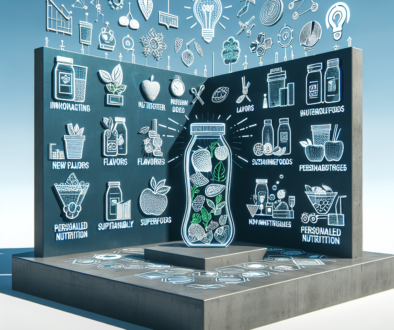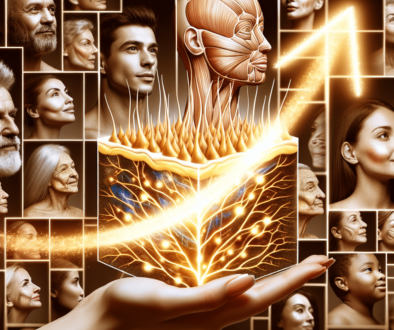Preparation Of A New Type Of Dermal Substitute-Human Hair Keratin-Collagen Sponge And Research On Its Biological Activity (English)
Keywords
Human Hair Keratin, Collagen Sponge, Dermal Substitute, Bioactive
Abstract
Objective To prepare a three-dimensional porous structural material of human hair keratin-collagen sponge and explore its feasibility as a dermal substitute. Methods The hhk component material of human hair, which has three absorption speeds in the body: slow (z), medium (b), and fast (f), was woven into a grid with a mesh size of 1 mm ¡Á 1 mm. Extract the collagen stock solution, prepare a type I collagen solution by centrifugation, salting out, dialysis, etc., and drop 6-chondroitin sulfate (6-gag) with 8% of the total collagen content into the solution for initial cross-linking. The prepared type I collagen solution was mixed with the hhk grid, then placed in the mold, vacuum freeze-dried into a sponge-like film, soaked in 0.25% glutaraldehyde solution and then cross-linked. The prepared hhk-collagen sponge membrane was cut into pieces (1cm ¡Á 1cm) and transplanted between the dermis and subcutaneous tissue of 21 rats (experimental group), and compared with the pure collagen sponge membrane group (negative control) and pure full-thickness skin. The incision group (blank control) was used as a control. The materials and surrounding tissues were taken at 7 different time points on the 3rd day and 1, 2, 4, 6, 8, and 12 weeks after the operation, and the paraffin sections were stained with He staining, aldehyde-fuchsin elastic fiber staining and scanning electron microscopy were used to detect the tissues. Compatibility, vascularization ability, and in vivo degradation of the material. Results: Human hair keratin was in the form of brown-yellow filaments. The collagen sponge membrane is slightly yellow. Translucent, three-dimensional structure with a pore diameter of 50 to 300 ¦Ìm. Three days after subcutaneous transplantation, all groups showed moderate inflammatory reactions, mainly neutrophils and monocytes. One week after the operation, the inflammatory reaction was slightly reduced, and a small number of fibroblasts and new blood vessels were seen around the material, which was more obvious in the experimental group than in the control group. Two weeks after surgery, in the experimental group and the negative control group, macrophages increased in inflammatory cells, fibroblasts in the experimental group proliferated actively, secreted a small amount of collagen, and the number of new blood vessels around the material increased. hhk and collagen sponge begin to degrade, and wound epidermal cells proliferate and migrate. Under the electron microscope, the collagen fibers and elastic fibers surrounding the materials in the experimental group were visible, and the human hair keratin hair cuticles were degraded and peeled off; 4 weeks after the operation, fibroblasts secreted a large amount of thick collagen. The epidermal cell proliferation and migration of the wound was obvious, and the experimental group basically healed. The two materials disintegrated significantly, and macrophage invasion and a small amount of small blood vessels could be seen in the collagen sponge mesh. Short rods or slender strips of elastic fibers can be seen in aldehyde-fuchs red elastic fiber staining; 6 to 8 weeks after surgery, the number of fibroblasts is relatively reduced, and the secreted collagen fuses into homogeneous and thick ones. In the experimental group, their arrangement tends to be neat, and the epidermal layer Heals well. Degradation cracks appeared in the middle of the human hair keratin material, and the collagen sponge was basically completely degraded. The aldehyde-fuchsin elastic fiber staining of the experimental group showed slender strips of elastic fibers; 12 weeks after surgery, the human hair keratin material was completely degraded. Conclusion Human hair keratin-collagen sponge membrane is a material with good physical and biological properties. It has good tissue compatibility and strong vascularization ability. It can stimulate cell proliferation and promote the healing of damaged skin, and can be used as a dermal substitute. More
For further information of this article and research, feel free to contact our team for asssitance.
Original research was done by Chen Yinghua, Dong Weiren, Xiao Yingqing, Zhao Binglei, Hu Guodong, An Lianbing
About ETChem
ETChem, a reputable Chinese Collagen factory manufacturer and supplier, is renowned for producing, stocking, exporting, and delivering the highest quality collagens. They include marine collagen, fish collagen, bovine collagen, chicken collagen, type I collagen, type II collagen and type III collagen etc. Their offerings, characterized by a neutral taste, and instant solubility attributes, cater to a diverse range of industries. They serve nutraceutical, pharmaceutical, cosmeceutical, veterinary, as well as food and beverage finished product distributors, traders, and manufacturers across Europe, USA, Canada, Australia, Thailand, Japan, Korea, Brazil, and Chile, among others.
ETChem specialization includes exporting and delivering tailor-made collagen powder and finished collagen nutritional supplements. Their extensive product range covers sectors like Food and Beverage, Sports Nutrition, Weight Management, Dietary Supplements, Health and Wellness Products, ensuring comprehensive solutions to meet all your protein needs.
As a trusted company by leading global food and beverage brands and Fortune 500 companies, ETChem reinforces China’s reputation in the global arena. For more information or to sample their products, please contact them and email karen(at)et-chem.com today.



